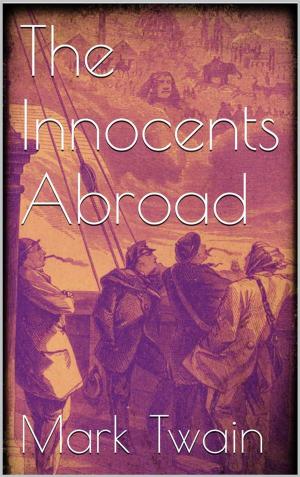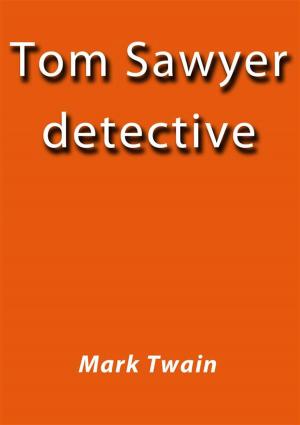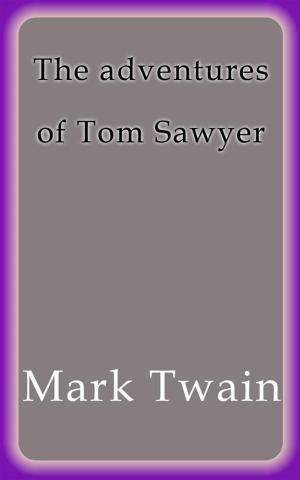THE MYSTERIOUS STRANGER Classic Novels: New Illustrated [Free Audiobook Links]
Fiction & Literature, Classics, Literary| Author: | Mark Twain | ISBN: | 1230000107015 |
| Publisher: | Mark Twain | Publication: | February 14, 2013 |
| Imprint: | Language: | English |
| Author: | Mark Twain |
| ISBN: | 1230000107015 |
| Publisher: | Mark Twain |
| Publication: | February 14, 2013 |
| Imprint: | |
| Language: | English |
"THE MYSTERIOUS STRANGER - Top Classic Novels" This edition included NEW illustrations + Free AudioBook Links + Clickable Table of Contents for both the list of included books and their respective chapters. Navigation couldn't be easier.
The text and chapters are perfectly set up to match the layout and feel of a physical copy, rather than being haphazardly thrown together for a quick release.
The Mysterious Stranger is the final novel attempted by the American author Mark Twain. It was worked on periodically from roughly 1890 up until 1910. The body of work is a serious social commentary by Twain addressing his ideas of the Moral Sense and the "damned human race".
Twain wrote multiple versions of the story, each unfinished and involving the character of "Satan". The first substantial version is commonly referred to as The Chronicle of Young Satan and tells of the adventures of Satan, the sinless nephew of the biblical Satan, in an Austrian village in the Middle Ages. The story ends abruptly in the middle of a scene involving Satan entertaining a prince in India.
The second substantial version Twain attempted to write is known as Schoolhouse Hill, which involves the familiar characters of Huckleberry Finn and Tom Sawyer and their adventures with Satan, referred to in this version as "No. 44, New Series 864962", and is set in the US. Schoolhouse Hill is the shortest of the three versions.
The third version, called No. 44, the Mysterious Stranger: Being an Ancient Tale Found in a Jug and Freely Translated from the Jug, returns to Medieval Austria and tells of No. 44's mysterious appearance at the door of a print shop and his use of heavenly powers to expose the futility of mankind's existence. This version also introduces an idea Twain was toying with at the end of his life involving a duality of the "self", one being the "Waking Self" and the other being the "Dream Self". Twain explores these ideas through the use of "Duplicates", copies of the print shop workers made by No. 44. This version contains an actual ending; however, the version is not considered as complete as Twain would have intended.
The edition published in 1916 is composed mainly of a heavily edited Chronicle of Young Satan with a slightly altered version of the ending from No. 44 tacked on. Albert Bigelow Paine, who had sole possession of Twain's unfinished work after Twain's death and kept them private, searched through Twain's manuscripts and found the proper intended ending for The Mysterious Stranger. After Paine's death in 1937, Bernard DeVoto became possessor of Twain's manuscripts and released them to the public. Beginning in the 1960s, critics studied the original copies of the story and found that the ending Paine chose for The Mysterious Stranger referred to the characters from different versions of the story (e.g. No. 44 instead of Satan) and that the original names had been crossed out and written over in Paine's handwriting.
The book version that was published nonetheless maintains Twain's criticisms on what he believed to be the hypocrisy of organized religion that is the subject of much of Twain's later writings.
In 1969, The University of California Press published, as part of The Mark Twain Papers Series, a scholarly edition of all three unaltered manuscripts. According to the "Mark Twain Project" editors of this series, No. 44, the Mysterious Stranger is the definitive version of the text as close as possible to what Twain would have published had he lived to do so. In addition to omitting a quarter of the original text, Paine's version invents the character of an astrologer who is made responsible for the villainies of Father Adolf. It was republished in 2005.
"THE MYSTERIOUS STRANGER - Top Classic Novels" This edition included NEW illustrations + Free AudioBook Links + Clickable Table of Contents for both the list of included books and their respective chapters. Navigation couldn't be easier.
The text and chapters are perfectly set up to match the layout and feel of a physical copy, rather than being haphazardly thrown together for a quick release.
The Mysterious Stranger is the final novel attempted by the American author Mark Twain. It was worked on periodically from roughly 1890 up until 1910. The body of work is a serious social commentary by Twain addressing his ideas of the Moral Sense and the "damned human race".
Twain wrote multiple versions of the story, each unfinished and involving the character of "Satan". The first substantial version is commonly referred to as The Chronicle of Young Satan and tells of the adventures of Satan, the sinless nephew of the biblical Satan, in an Austrian village in the Middle Ages. The story ends abruptly in the middle of a scene involving Satan entertaining a prince in India.
The second substantial version Twain attempted to write is known as Schoolhouse Hill, which involves the familiar characters of Huckleberry Finn and Tom Sawyer and their adventures with Satan, referred to in this version as "No. 44, New Series 864962", and is set in the US. Schoolhouse Hill is the shortest of the three versions.
The third version, called No. 44, the Mysterious Stranger: Being an Ancient Tale Found in a Jug and Freely Translated from the Jug, returns to Medieval Austria and tells of No. 44's mysterious appearance at the door of a print shop and his use of heavenly powers to expose the futility of mankind's existence. This version also introduces an idea Twain was toying with at the end of his life involving a duality of the "self", one being the "Waking Self" and the other being the "Dream Self". Twain explores these ideas through the use of "Duplicates", copies of the print shop workers made by No. 44. This version contains an actual ending; however, the version is not considered as complete as Twain would have intended.
The edition published in 1916 is composed mainly of a heavily edited Chronicle of Young Satan with a slightly altered version of the ending from No. 44 tacked on. Albert Bigelow Paine, who had sole possession of Twain's unfinished work after Twain's death and kept them private, searched through Twain's manuscripts and found the proper intended ending for The Mysterious Stranger. After Paine's death in 1937, Bernard DeVoto became possessor of Twain's manuscripts and released them to the public. Beginning in the 1960s, critics studied the original copies of the story and found that the ending Paine chose for The Mysterious Stranger referred to the characters from different versions of the story (e.g. No. 44 instead of Satan) and that the original names had been crossed out and written over in Paine's handwriting.
The book version that was published nonetheless maintains Twain's criticisms on what he believed to be the hypocrisy of organized religion that is the subject of much of Twain's later writings.
In 1969, The University of California Press published, as part of The Mark Twain Papers Series, a scholarly edition of all three unaltered manuscripts. According to the "Mark Twain Project" editors of this series, No. 44, the Mysterious Stranger is the definitive version of the text as close as possible to what Twain would have published had he lived to do so. In addition to omitting a quarter of the original text, Paine's version invents the character of an astrologer who is made responsible for the villainies of Father Adolf. It was republished in 2005.
![Cover of the book THE MYSTERIOUS STRANGER Classic Novels: New Illustrated [Free Audiobook Links] by Mark Twain, Mark Twain](https://www.kuoky.com/images/2013/february/500x500/1230000107015-QOYi_500x.jpg)

![Cover of the book THE PRINCE AND THE PAUPER Classic Novels: New Illustrated [Free Audiobook Links] by Mark Twain](https://www.kuoky.com/images/2013/february/300x300/1230000104800-s0ua_300x.jpg)










![Cover of the book Mark Twain: The Complete Works[Classics Authors Vol: 1] (Black Horse Classics) by Mark Twain](https://www.kuoky.com/images/2017/january/300x300/9781446510568-auFJ_300x.jpg)

![Cover of the book ADVENTURES OF HUCKLEBERRY FINN Classic Novels: New Illustrated [Free Audio Links] by Mark Twain](https://www.kuoky.com/images/2013/january/300x300/1230000102722-dY8b_300x.jpg)